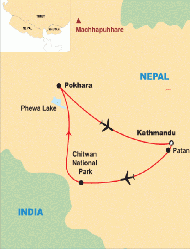
Jungle Calling
India, the land which is known the world over for its rich and diverse variety of flora and fauna, is also home to a myriad species of rare wildlife found nowhere else on the globe. The reasons for the same are simple yet exciting, India currently has more than 500 national parks, wildlife sanctuaries and tiger reserves. The choices are immense and unending.
The fresh air, salubrious climate and serene environs will leave you spellbound and your appetite whetting for more.
Pench National park, nestling in the lower southern reaches of the Satpuda hills is named after Pench river, meandering through the park from north to south. It is located on the southern boundary of Madhya Pradesh, bordering Maharashtra, in the districts of Seoni and Chhindwara.
The undulating topography supports a mosaic of vegetation ranging from moist, sheltered valleys to open, dry deciduous forest. Over 1200 species of plants have been recorded from the area including several rare and endangered plants as well as plants of ethno-botanical importance.
The area has always been rich in wildlife. It is dominated by fairly open canopy, mixed forests with considerable shrub cover and open grassy patches. The high habitat heterogeneity favours high population of Chital and Sambar. Pench tiger reserve has highest density of herbivores in India (90.3 animals per sq km).
Kanha The picturesque Kanha National Park was the inspiration behind Rudyard Kipling's unforgettable classic "Jungle Book". If one were to point to the middle of India, chances are that he will pick out the forests of the Banjar and the Halon valley, the two forming the western and eastern halves of the Kanha Tiger Reserve, which have long been famous for their wide diversity of wildlife.
Today Kanha National Park is among the few most scenic and beautiful wildlife reserves in Asia. This 'Tiger Country' is the ideal home for both predator and prey.
Bandhavgarh National Park is famous for its tigers and the adventure unfolds at day break. The early morning mist blankets surround your open jeeps. As we advance into the heart of the Bandhavgarh Forest, a sense of expectation grips you. Tigers regularly give audience in these parts. Other wild animals are also easy to sight and capture on film. Experienced naturalists unravel the mysteries of nature as you drive deep into the jungle.
Ranthambhore With over 300 types of trees, 272 species of birds and approximately 30 different types of mammals, Ranthambhore is packed full with life. The park is a home to India's smallest and largest antelopes, Chinkara and Nilgai ('blue bull').





